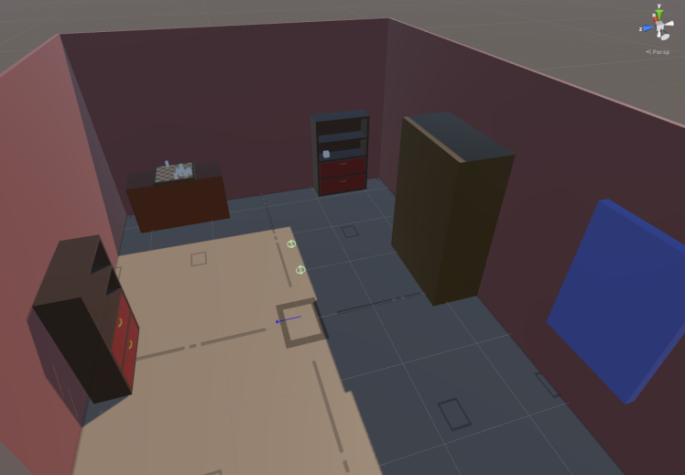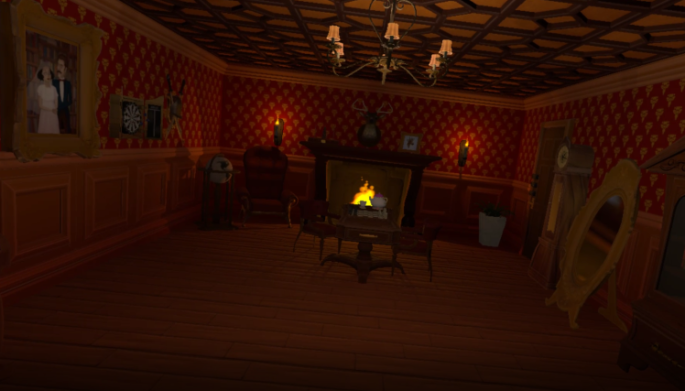To wrap the whole project up nicely with a bow, we have been asked to make an overview post of the entire project (prepare for literally every link to previous posts). I’ll be covering the whole pipeline with these bullet points:
- Idea generation and pitching
- Pre-production and planning
- Team composition and job roles
- Production and team management
- Post-production and publishing
The flowchat below covers all stages of the project, currently we’re still preparing for the expo in the post-production stage so it isn’t quite over yet. You’ll have to zoom in to get a good view, apologies!

I’ll roll the clock back to Winter 2017. We broke up for winter holidays and mixed in with the usual festivities was Kelly and I preparing our pitch. We knew we’d get two weeks when we returned but the idea had been in our heads for a number of months already, so got to work early putting the idea onto paper. We had owned a Vive for some time already and part of the original purchase agreement between each other, is that we’d develop a VR game come the second year of the course.
This eventually took the form of an escape room in an old manor house. Initially we had intended for certain horror elements due to recent inspiration from the game ‘Layers of Fear’ but that never made it into the production. At the time there were only one or two of these types of games on the Steam store and most felt a little….’clinical’ might be the best word. We felt we could do something with a little more atmosphere and charm. This led to the decision to pitch the game as stylised and would need some hand painted textures. This led to some serious time delays along the way, and while the end result isn’t as stylised as I hoped, I’m still pleased I made that call.
- Synoptic Pitch – Pt.1
- Synoptic Pitch – Pt.2
- Synoptic Pitch – Pt.3
- Synoptic Pitch – Pt.4
- Pitch Presentation
The pitch was delivered and we waited for a week while the lecturers decided which pitches to choose and what teams to assemble. We found out 4 days afterwards that our pitch had been chosen and we had been assigned Adam & Nikki who we had worked with during Imagined Worlds. The two of them and myself would compromise the 3D team, with me leading the trio. We were also assigned Eve and Caitlin, together they would make the 2D side of the team, focusing on concepts and any other in game 2D work we needed. Along with Kelly on programming and project manager this made a team of six and one of the larger synoptic teams in the year.
Next came pre-production and a mix of paperwork and further concept art (so the modelers could hit the ground running once production started). There were a number of paperwork requirements, a burndown chart, tech-spec documents, class/activity diagrams and an asset list. We sat around as a team for this two week period and saw to it that all of these were completed. We did however miss out on doing individual production schedules and had to retroactively complete those after feedback was given. The tech-spec documents were there to make sure all the modelers were working from the same page in terms of software, resolutions, texturing etc and this was the same for 2D and programming too. It also contained how to structure our naming schemes for in engine.
- Synoptic – Pre-Production Pt.1
- Synoptic – Pre-Production Pt.2
- Synoptic – Pre-Production Pt.3
- Synoptic – Pre-Production Pt.4
- Synoptic – Pre-Production Pt.5
- Synoptic – Pre-Production Feedback
Thanks to all the effort put into pre-production, actual production started off with a bang. We had a rough idea of the room layout, what assets we needed to fill it etc. However this did slow to a crawl after a few weeks on the 3D side of things and for that I still feel responsible. Despite I had done a hand painted texture test during pre-prod to show proof of concept, this was a tiny model in scale. When it suddenly came to scaling this up to look good on cabinets, bookcases, pianos the process fell down. Our maps were scaled up to 2048 from the original 1024 in the brief and Nikki and Adam were left to experiment by themselves to achieve a similar style. I did provide my original file for reference but I should have done a lot more planning and tests to prepare the rest of the team.
We rode over that bump and eventually settled back into routine production however we did all end up with slightly different painted results. Overall it isn’t too noticeable in the end product but if you were to compare each model with some scrutiny, you’d notice.
The MVP target was still met despite all of this, giving us a good chunk of time to focus on some stretch assets and a cycle of testing and feedback from within the team and outside of the team (if anyone was willing, we threw them in the game for some feedback). As stretch began this was also the point I was feeling stale as an artist (mentioned this before), having not learnt much in the way of new modeling skills in the second year. So I took it upon myself to learn Zbrush and tried to incorporate this into my stretch asset models. Took a bit of extra time, but I’m pleased I did it.
- Synoptic – Production Pt.1
- Synoptic – Production Pt.2
- Synoptic – Production Pt.3
- Synoptic – Production Pt.4
- Synoptic – Production Pt.5
- Synoptic – Production Pt.6
- Synoptic – Production Pt.7
- Synoptic – Production Pt.8
- Synoptic – Production Pt.9
- Synoptic – Production Pt.10
- Synoptic – Production Pt.11
- Synoptic – Production Pt.12
- Synoptic – Production Pt.13
- Synoptic – Production Pt.14
- Synoptic – Production Pt.15
- Synoptic – Production Pt.16
- Synoptic – Production Pt.17
- Synoptic – Production Pt.18
- Synoptic – Production Pt.19
- Synoptic – Production Pt.20
- Synoptic – Production Pt.21
- Synoptic – Production Pt.22
- Synoptic – Production Pt.23
- Synoptic – Production Pt.24
As can be seen throughout this process, blogging was constant. In most cases two a week, reviewing scrum minutes from each day in college. The scrumming process was essential to good communication and also gave us an opportunity each morning to review each others work before it was passed into engine. However communication outside of college was just as essential as proven with the success of Imagined Worlds. A Facebook messenger chat was created for the group and the team was encouraged to update and post 24/7 on whatever they were working on. It kept the team dynamic going on days we didn’t physically see each other.
That brings us into post-production which has only just begun if I’m honest. I posted a bullet list of things the other day that we aim to have made by the Expo, I’ll re-post it for ease:
- Hoodies with logos/game title embroidered on – Marc and I own an embroidery machine, so we’re going to give that a try with some cheaper Primark hoodies.
- I’ve bought supplies to try making some pins to give out, as well as to keep on us for advertising – we’ll have about 50+ of these, so hopefully enough for anyone who comes to see us.
- We have a friend who owns a 3D printer, so we were thinking of looking into making some small trophies (on keychains, perhaps) for anyone who successfully completes the game within a set amount of time.
- The 2D artists can make some promotional posters and/or print out our art book contributions, to show off the concept art that went into the game itself.
- We’ll need to do a commercial-like video to show on one of the 3/4 monitors we’ve got reserved in Matt’s room – this will have to show the basics of the game, but not give away any of the clues/answers.
It is a lot to get done in a week and a half and I’m not sure how much we’ll get done but as always its better to aim big and fall a little short than to aim too low!
I’d like to thank the rest of the team for 5 months of quality effort. We gave a serious pitch with obvious intentions of making this something to be proud of, and everyone stood up to the challenge and delivered! Imagined Worlds looked great thanks to Unreal and thanks to set camera angles SO much of the scene was barren and empty, however Trapped in Bleak Manor can be viewed from any angle in VR and the quality is consistent throughout.
Roll on the Expo and a horde of new players to experience being ‘Trapped in Bleak Manor’!
ROLL CREDITS!



